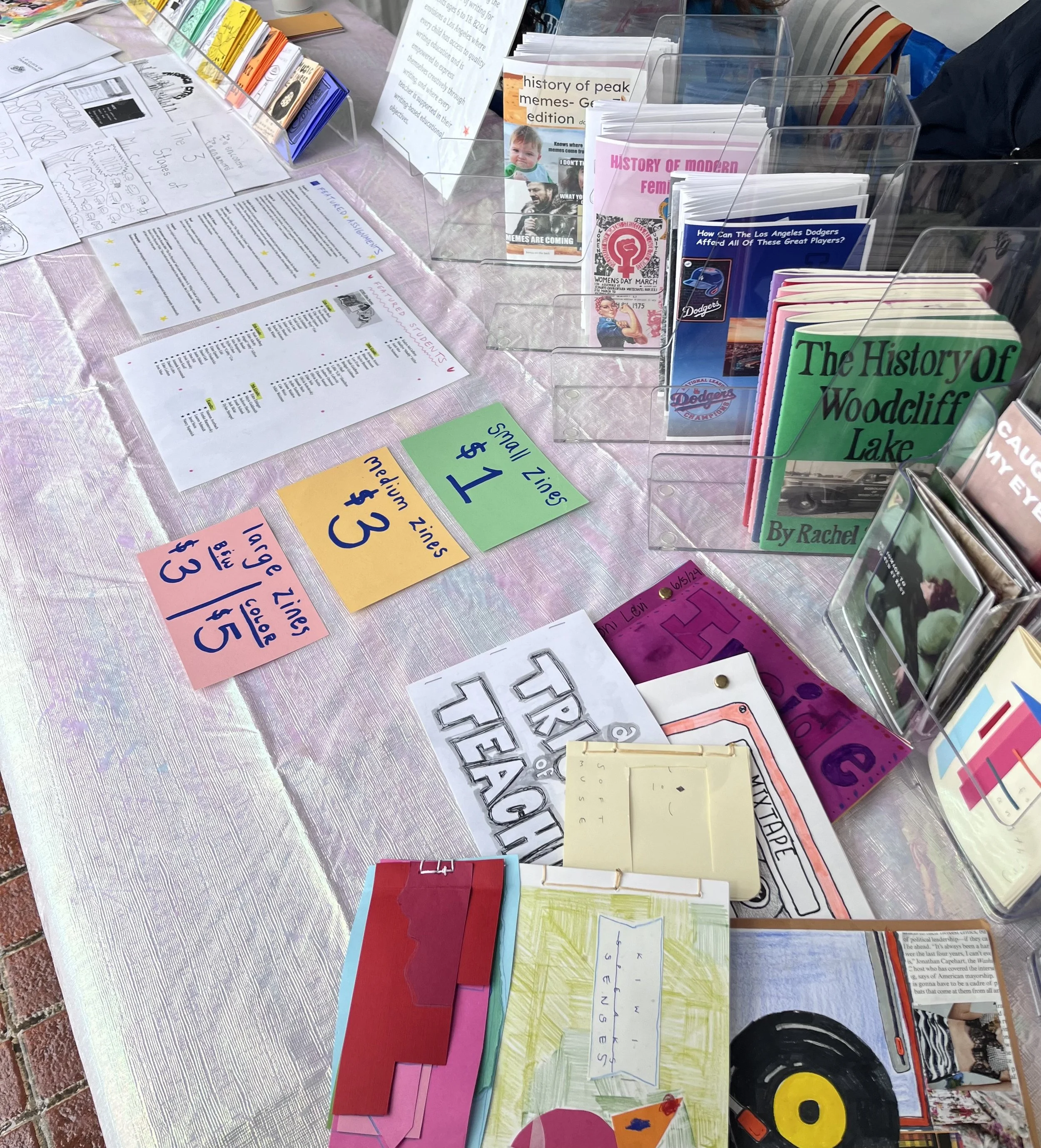Zines, Scenes, and Student Voices: A Classroom Story from de Toledo High
At de Toledo High School, creativity isn’t confined to the margins, it takes center stage. What started as a spark of inspiration from a photography class quickly turned into a campus-wide movement, as English teachers embraced the DIY spirit of zine-making and wove it into their curriculum. From literary analysis to personal storytelling, students explored new ways to express themselves through handmade (and sometimes beautifully messy) booklets filled with original writing and art.
The result? A classroom project that not only deepened students’ relationship with writing but also gave back through a heartfelt donation of zine proceeds to 826LA. In this interview, one passionate educator shares how zines brought fresh energy to student learning, what the creative process looked like, and why helping young people write their own stories, whether in the classroom or through organizations like 826LA, is more important than ever.
What inspired you to bring a zine-making project into your classroom?
Ms. Schmidt: I remember being into zines back in my high school Tumblr days, but our photography teacher, Amanda Quinlan, is the one who really brought zines to our campus. Once I saw what she was doing with her photography students, I became obsessed with getting zine assignments in every classroom.
How did students decide on the content and themes of the zine, and what did the creative process look like?
Ms. Schmidt: I’m lucky to work alongside incredible educators who saw the vision and ran with it. Whether it be tracking motifs in Macbeth, conceptualizing what students “carry” (á la “The Things They Carried”), writing a collection of short stories, or practicing research on a topic of their choosing, we had zine assignments in almost every English classroom.
The most important part of the creative process was brainstorming, which students wanted to rush through as fast as possible. Hanging out in the “unknown” can be intimidating, so they try to nail down an idea immediately. Over time, I noticed that the students who spent more time looking at references and getting inspired, allowing all the ideas to swirl in their heads before committing, often produced the more unique zines. And the students who rushed were often the ones changing their minds halfway through because they were boring themselves silly.
3. How did participating in this project impact your students' relationship with writing and creativity?
Ms. Schmidt: Students live in a visual world, where everything is a pairing of image + text, and so the assignments helped students practice writing within this visual mode of storytelling. Overall, we were shocked at the investment students had in making them. The medium opened up a whole new set of paths for them to take, allowing students to be creative in ways they might not have explored since elementary school. We encouraged them to be “hands-on,” even if it meant things were messy, which gave them the freedom to play with imperfection. Did students still forgo the DIY element and choose to do it digitally? Of course, but they still had plenty of license to experiment.
4. Why did your class choose to donate the proceeds to 826LA, and what does that gesture represent to you and your students?
Ms.Schmidt: In full transparency, our English department chose to donate the proceeds to 826LA. We knew we couldn’t sell them for profit, because it would have been a logistical nightmare. So, we were bouncing ideas around, and Vanessa Averbach, a fellow English teacher, threw out 826LA, and I immediately latched onto it. I volunteered with 826LA way back in the day, and believe in its mission of helping students learn to write their own stories. There is nothing more valuable to a group of English teachers than that!
5. What advice would you give to other educators who want to try a project like this?
Ms.Schmidt: Do it! Seriously! There are so many resources online that can teach you the different types (one-page vs. 8-page booklet) and how to print/fold them. The more examples you have, the better. (There are lots of digital zine databases out there!) There are zine fests all over SoCal that can provide inspiration and introduce you to different styles/formats. Mostly, there is a lot of trial and error. I can’t tell you how many times I messed up stapling, formatting, folding, printing…but that's all a part of the messy process!



